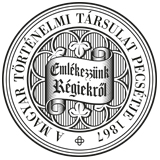Századok – 2008
TANULMÁNYOK - Tózsa-Rigó Attila: A pozsonyi Tiltáskönyv (1538-1566) információs bázisa (Különös tekintettel a pozsonyi felső- és középréteg városon túlnyúló kapcsolatrendszerére) V/1135
szép számmal találunk szellemi foglalkozásúakat és kézműveseket. Előbbiek a kézművesekhez viszonyítva általában nagyobb értékben tiltanak, az iparosoknál viszont jobban pontosítható a konkrét kereseti tevékenység. Pozsony térségéből nagyobb számú követeléssel a nagyszombatiak és a szentgyörgyiek vannak jelen. Távolabbról Győr és Kassa, illetve Várad említhető. A tiltó személyek között a pozsonyiak után messze a bécsiek jelennek meg a legnagyobb arányban (12%). Osztrák területről még a Hainburg-Marchegg-Schweinbart, illetve a Steyr-Salzburg „útvonal" jelentős. A morva térségből kiemelhető Iglau, illetve Szilézia irányában Prossnitz és Olmütz. Az 1542. évi vámnaplók adataival cseng össze a Tiltáskönyv azon információja, miszerint Sziléziából 53 esetben érkezett követelés. A dél-német térségből Nürnberg képviselteti magát a legnagyobb számú tiltással (53), amelyek többségét személyesen jegyeztették be. Augsburg kereskedői 47 tiltással jelentkeznek. A térségből említhető még Ulm és Sankt Gallen. Az elemzések megmutatták, hogy a kapcsolatrendszer súlypontjait nem feltétlenül a hagyományosnak mondható, régiók szerinti felosztásban a legcélszerűbb ábrázolnunk. A származás vizsgálata során sokkal inkább régiókon átnyúló útvonalak rajzolódnak ki (például az osztrák és a morva területek, valamint Szilézia esetében). Ezek a súlyponti vonalak a korabeli kereskedelmi útvonalakkal esnek egybe. A kutatás jövőbeni kiterjesztéseként mindenképpen vizsgálni kell azoknak a városoknak a levéltári anyagát, ahonnan tiltást jegyeztettek be Pozsonyban. THE INFORMATION DATA BASIS OF THE PROHIBITION BOOK OF POZSONY (1538-1566) (With Special Regard to the Upper and Middle Layers of Urban Society and their Extra-Urban Network) by Attila Tózsa Rigó (Summary) The Prohibition Book (Verbotbuch) of Pozsony offers the possibility of various quantitative analyses. Among the main groups of information, one third of the debts of known amounts spread from 10 to 50 florins, another third spreading from 100 to 3200 florins. In more than half of the cases the prohibition referred to the whole wealth of the debtor. Further important „target groups" were the real estates and the inheritances, whereas 18 % are represented by the prohibitions involving cash. Under the heading of „circumstances of prohibition" one finds important additional information. One third of them report on the business concerning money and real estates. References to contemporary legal customs and written statements allow insight into the practical part of trade. As regards the activity of the persons concerned, alongside the traders we find a good number of intellectuals and craftsmen alike. The former generally make prohibitions concerning greater values, whereas in the case of craftsmen their activity can be reconstructed more exactly. In the region of Pozsony the burghers of Nagyszombat and Szentgyörgy are present with an important amount of demands. Outside the region the towns of Győr, Kassa and Várad deserve mention. Among the prohibitors those of Vienna come right after the burghers of Pozsony. In Austria the two axes of Hainburg - Marchegg - Schweinbart and Steyr - Salzburg seem important alongside Vienna. From Moravia Iglau can be mentioned, as well as Prossnitz and Olmütz in the direction of Silesia. The information of the Prohibition Book, according to which 53 demands arrived from Silesia, is in accordance with the customs registers of 1542. From the region of Southern Germany Nurenberg is represented with 51 prohibitions, followed by Augsburg with 47. Besides them, Ulm and Sankt Gallen should be mentioned. The analyses proved that it is not necessarily within the traditional division among regions that the network of relationships should be presented. The examination of origins highlighted rather itineraries stretching over the regions, especially in the case of the Austrian and Moravian territories and of Silesia. These lmes of focal points correspond to contemporary trading routes. In the future the archives of those towns whence prohibitions arrived to Pozsony should also be examined.
